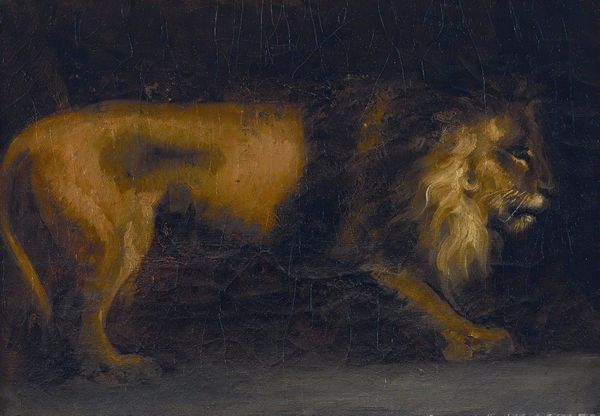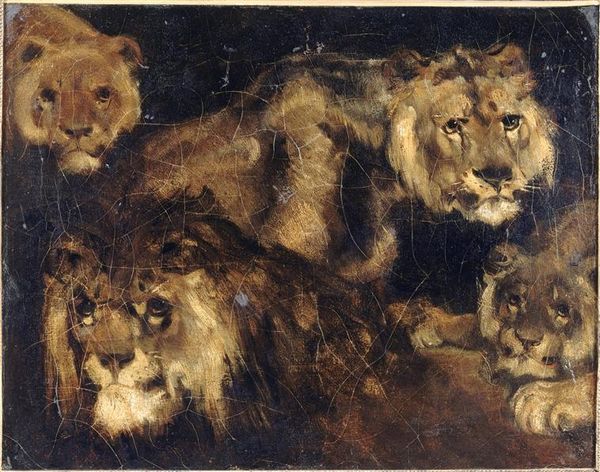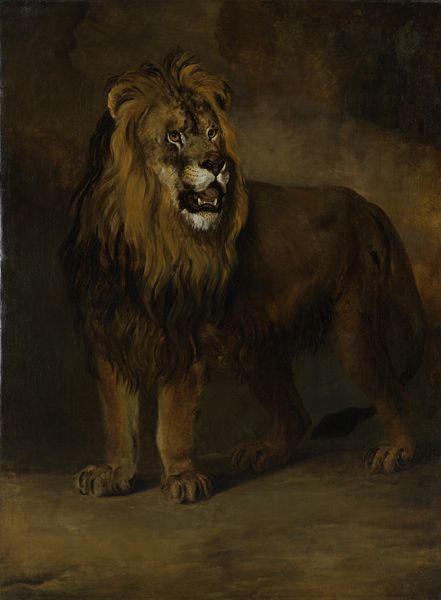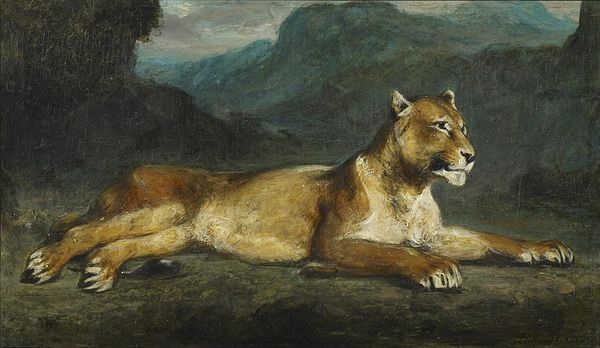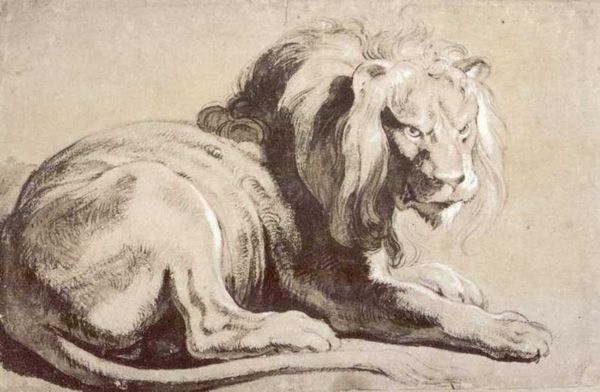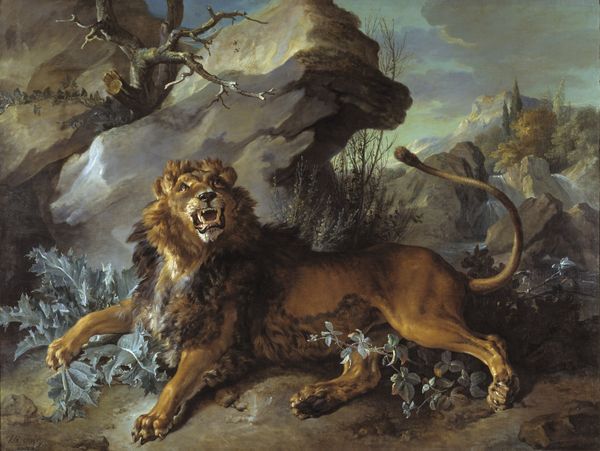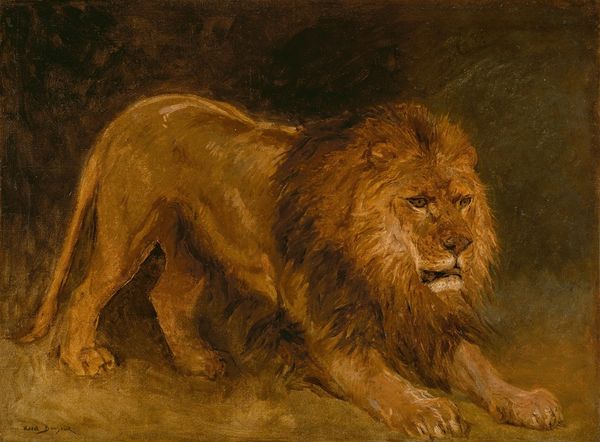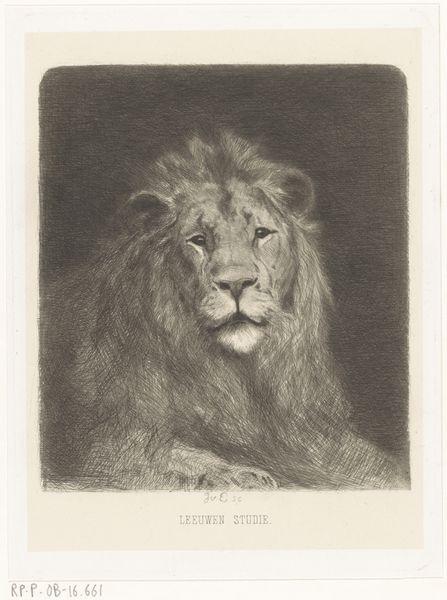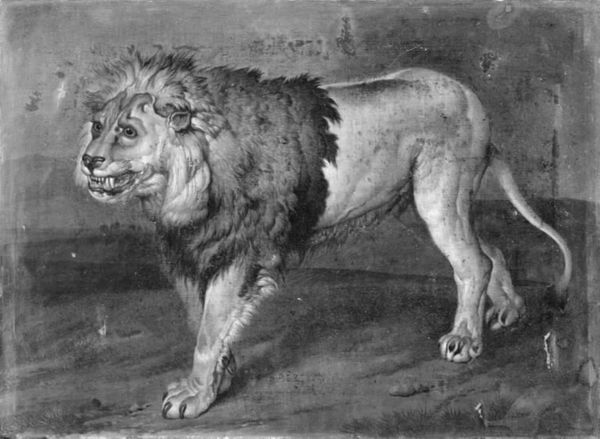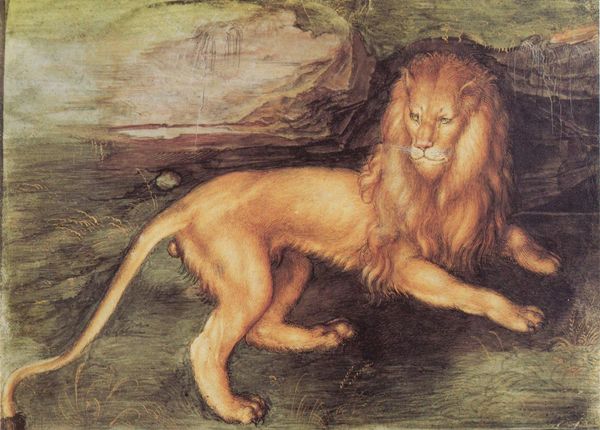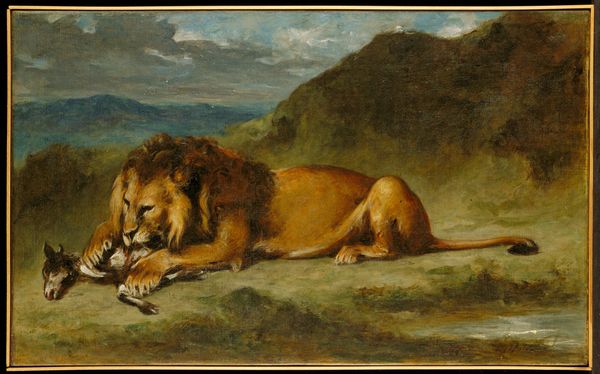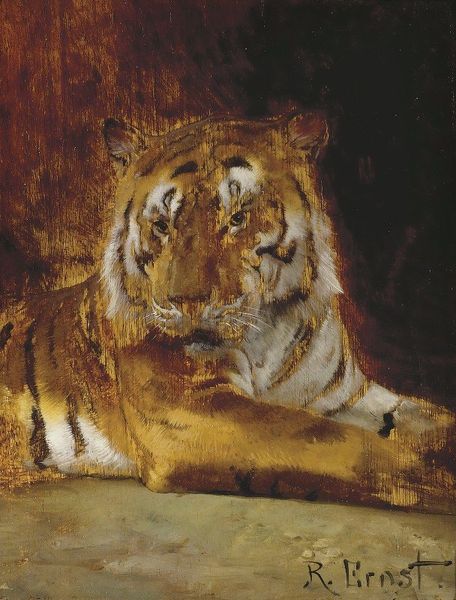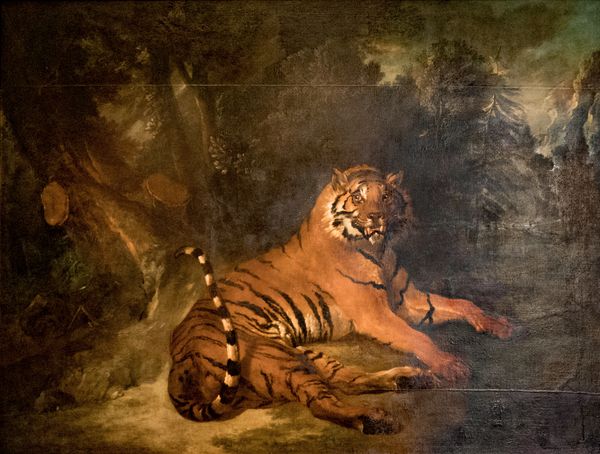
oil-paint
#
portrait
#
animal
#
oil-paint
#
charcoal drawing
#
figuration
#
oil painting
#
romanticism
#
animal portrait
#
chiaroscuro
Dimensions: 55 x 65 cm
Copyright: Public domain
Editor: This is Théodore Géricault's "The head of lion," painted around 1821. It's an oil painting, and I'm immediately struck by the lion’s intense gaze. How should we interpret its imposing figure, emerging from darkness like that? Curator: It's crucial to place this within the Romantic movement. The early 19th century saw a shift from Neoclassical order to emotional intensity, with a growing interest in the sublime, especially untamed nature. How do you think Géricault uses the animal as a symbolic device here? Editor: I see that the lion might embody ideas of power and primal instinct that are prevalent within Romanticism? Curator: Precisely. But consider also the social context. Lions, even if only ever seen at the zoo for the French, became symbols, proxies, and vehicles for the conveyance of power, sovereignty and masculine identity in art and life. Consider the placement of these 'exotic' animals within zoos and public menageries and think how Géricault uses this visual power to connect with a broader societal interest in untamed nature. How does this 'animal portrait' deviate from a more classical or academic style? Editor: I see, less idealization and perhaps a grittier, more visceral representation compared to earlier animal depictions. The rawness in texture brings to mind a turn away from traditional power structures. It's interesting to consider how he harnesses the gaze, that's usually the reserve of human portraiture! Curator: It challenges the hierarchy between human and animal, and subverts traditional portraiture, offering us a glimpse into how social values shape artistic expression. I appreciate how the use of the dramatic 'chiaroscuro' is also in itself something powerful that can be readily applied across diverse portraiture. Editor: It's eye-opening to view this 'animal portrait' through a social and historical lens, beyond its purely aesthetic appeal. Curator: Absolutely, seeing art as a reflection of power dynamics opens up rich avenues of interpretation.
Comments
No comments
Be the first to comment and join the conversation on the ultimate creative platform.
